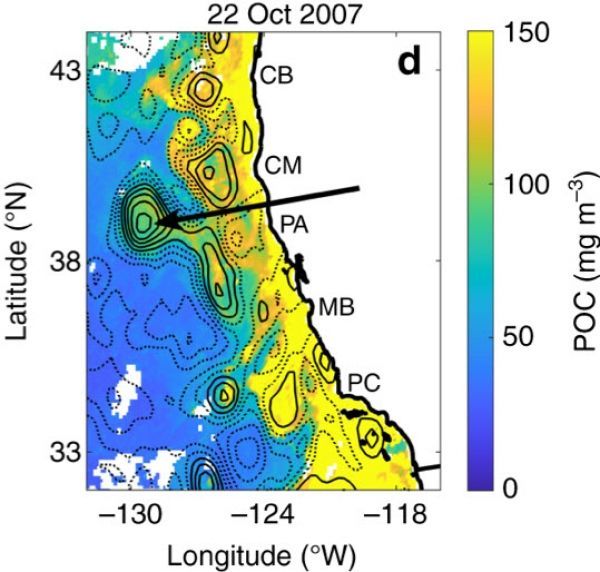The 200-mile zone that hugs the curvature of the coast bursts with life, from phytoplankton to whales. Out in the open ocean, this activity is comparatively diminished. Understanding how coastal water is moved offshore fertilizing the open ocean is a long-standing goal of ocean scientists.
Now, a new study from University of Georgia researchers describes for the first time using large-scale observational analyses how upwelled water is trapped along the coast and then transported offshore, expanding the zone of biological productivity. The study was published Oct. 30 in Nature Communications.
Several mechanisms effectively move water offshore, from wind-forcing to the way ocean currents interact with coastal topography with capes and sub-marine banks, transporting nutrients and carbon far offshore. The UGA team focused on upwelling, in which deep, cold water rises to the surface along the coast, in the California Current System off the western coast of North America, characterized by ocean currents moving southward.
As this current flows southward and upwelling occurs, spinning masses of water called eddies form with diameters ranging from 50 to 150 miles. Modeling studies have shown that these mesoscale eddies can trap the nutrient-rich upwelled water along the coast and transport it offshore. However, no observational study had previously systematically quantified this process.
Continue reading at University of Georgia
Image via University of Georgia


